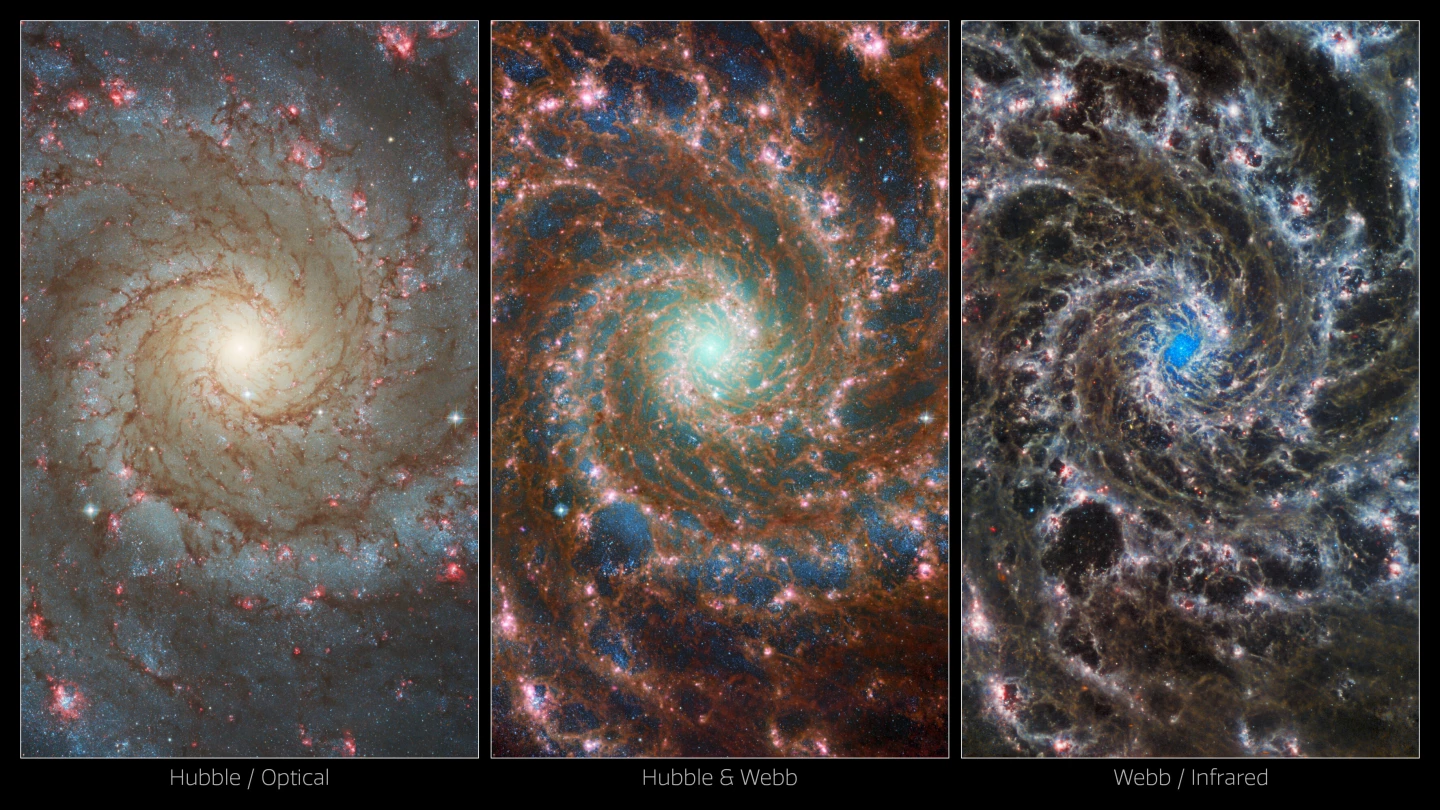The James Webb Space Telescope has returned another mesmerizing view of a celestial object, and one that really drives home the scientific potential of the powerful orbiting observatory. The focus of the program's latest spellbinding image is a star-forming system known as the Phantom Galaxy, which reveals its spectacular spiraling arms in exciting new detail.
The first batch of images from the James Webb Space Telescope landed in July, and the instrument has been busy ever since. It has shown us the chaotic Cartwheel Galaxy in stunning detail, and presented a dreamy view of Jupiter, complete with its spectacular array of rings and auroras.
Its latest target is the Phantom Galaxy, also known as Messier 74, which falls into the "grand design spiral" class of galaxy owing to its clear and distinct spiraling arms. It is around 32 million light years away and sits in the Pisces constellation facing almost front-on with Earth, making it popular subject of study for astronomers here on the ground.
Hubble, James Webb's predecessor, has produced awe-inspiring images of the Phantom Galaxy in the past, revealing its star-forming regions in ultraviolet and visible wavelengths of light. By turning Webb's Mid-Infrared instruments to the same patch of the universe, scientists were able to gain a valuable new perspective.

These Webb images reveal the galaxy's spiraling filaments in sharp detail, and also create an unobstructed view of the nuclear star cluster at its center, as compared to Hubble. The lack of gas clouding this section clears the way for closer inspection of the galaxy's star-forming regions, which could lead to accurate new measurements of these stars' masses and ages.

And by combining data from different telescopes in this way, as seen in the composite image above, scientists can study astronomical objects from exciting new angles. We can expect to see this shed new light on other nearby star-forming galaxies as part of the international PHANGS survey, which is compiling high-resolution observations of 18 others using Webb, Hubble, ALMA and the VLT.
Source: ESA






